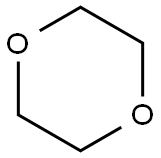1,4-Dioxane-Hazard and Toxicity
Sep 5,2019
Description
1,4-dioxane is a clear liquid with ether-like odour. It is highly flammable and forms explosive peroxides in storage (rate of formation increased by heating, evaporation, or exposure to light). 1,4-Dioxane is incompatible with oxidising agents, oxygen, halogens, reducing agents, and moisture. Industrial applications of 1,4-dioxane are extensive, for instance, as solvent for cellulose acetate, ethyl cellulose, benzyl cellulose, resins, oils, waxes, and some dyes; as a solvent for paper, cotton, and textile processing; and for various organic and inorganic compounds and products. It is also used in automotive coolant liquid and in shampoos and other cosmetics as a degreasing agent and as a component of paint and varnish.
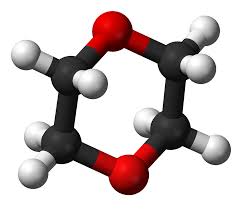
Toxicity Data
LD50 oral (mouse) 5700 mg/kg
LC50 inhal (rat) 13,000 ppm (46,800 mg/m3; 2 h)
LD50 skin (rabbit) 7600 mg/kg
PEL (OSHA) 100 ppm (360 mg/m3)—skin
TLV-TWA (ACGIH) 25 ppm (90 mg/m3)—skin
Major Hazards
Highly flammable; forms sensitive peroxides on exposure to air that may explode on concentration by distillation or drying. The toxicity of 1,4-dioxane is low in testanimals by all routes of exposure. However,in humans the toxicity of this compoundis severe. The target organs are theliver, kidneys, lungs, skin, and eyes.
Exposureto its vapors as well as the absorptionthrough the skin or ingestion can cause poisoning,the symptoms of which include drowsiness,headache, respiratory distress, nausea,and vomiting. It causes depression of centralnervous system. There are reports of humandeaths from subacute and chronic exposures todioxane vapors at concentration levels rangingbetween 500 and 1000 ppm.
Toxicity
The acute toxicity of 1,4-dioxane is low. Exposure to 200 to 300 ppm causes irritation of the eyes, nose, and throat. Inhalation of higher concentrations can result in damage to the kidneys and liver. Symptoms of overexposure may include upper respiratory tract irritation, coughing, drowsiness, vertigo, headache, stomach pains, nausea, and vomiting. Prolonged or repeated contact may produce drying and cracking of the skin. Ingestion of this substance will result in the effects of exposure by inhalation. The odor of dioxane is not unpleasant, and its irritating effects may be transitory; consequently, it is not regarded as a substance with adequate warning properties.
Dioxane shows carcinogenic effects in animal studies and is listed by IARC in Group 2B ("possible human carcinogen"). It is not classified as a "select carcinogen" according to the criteria of the OSHA Laboratory Standard. Prolonged or repeated exposure to this substance may result in liver and kidney injury. Dioxane has not been shown to be a reproductive or developmental toxin in humans.
Flammability and Explosibility
Dioxane is a highly flammable liquid (NFPA rating = 3). Its vapor is heavier than air and may travel a considerable distance to a source of ignition and flash back. Dioxane vapor forms explosive mixtures with air at concentrations of 2 to 22% (by volume). Fires involving dioxane should be extinguished with carbon dioxide or dry powder extinguishers.
Dioxane can form shock- and heat-sensitive peroxides that may explode on concentration by distillation or evaporation. Samples of this substance should always be tested for the presence of peroxides before distilling or allowing to evaporate. Dioxane should never be distilled to dryness.
Reactivity and Incompatibility
Dioxane can form potentially explosive peroxides upon long exposure to air. Dioxane may react violently with Raney nickel catalyst, nitric and perchloric acids, sulfur trioxide, and strong oxidizing reagents.
Storage and Handling
In particular, dioxane should be used only in areas free of ignition sources, and quantities greater than 1 liter should be stored in tightly sealed metal containers in areas separate from oxidizers. Containers of dioxane should be dated when opened and tested periodically for the presence of peroxides.
Accidents
In the event of skin contact, immediately wash with soap and water and remove contaminated clothing. In case of eye contact, promptly wash with copious amounts of water for 15 min (lifting upper and lower lids occasionally) and obtain medical attention. If dioxane is ingested, obtain medical attention immediately. If large amounts of this compound are inhaled, move the person to fresh air and seek medical attention at once.
In the event of a spill, remove all ignition sources, soak up the dioxane with a spill pillow or absorbent material, place in an appropriate container, and dispose of properly. Respiratory protection may be necessary in the event of a large spill or release in a confined area.
Disposal
Excess dioxane and waste material containing this substance should be placed in an appropriate container, clearly labeled, and handled according to your institution's waste disposal guidelines.
- Related articles
- Related Qustion
- Uses of 1,4-Dioxane Jan 19, 2022
1,4-Dioxane was first identified in 1863 and became available for commercial use in the 1930s as a solvent in cellulose acetate and plastics manufacturing. 1,4-Dioxane was used as a stabilizer for chlorinated organic solvents, beginning in
- What is the application of 1,4-Dioxane? Oct 13, 2021
1,4-Dioxane was used as a stabilizer for chlorinated organic solvents, beginning in the 1950s. Groundwater contamination has been an issue of concern near hazardous waste sites contaminated with chlorinated solvents.
Aluminium chloride (AlCl3), also known as aluminium trichloride, is the main compound of aluminium and chlorine. It is white, but samples are often contaminated with iron(III) chloride, giving it a yellow color. The solid has a low melting....
Sep 4,2019APIWhite phosphorus is a highly toxic substance by all routes of exposure. Contact of the solid with the skin produces deep painful burns, and eye contact can cause severe damage. Ingestion of phosphorus leads (after a delay of a few hours) to....
Sep 5,2019Inorganic chemistry1,4-Dioxane
123-91-1You may like
- 1,4-Dioxane
-
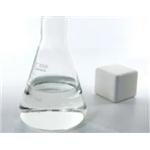
- $2740.00 / 1ton
- 2024-04-26
- CAS:123-91-1
- Min. Order: 1ton
- Purity: 99%
- Supply Ability: 5000ton
- 1,4-Dioxane
-
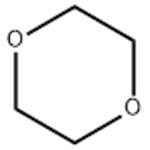
- $50.00 / 1KG
- 2023-12-23
- CAS:123-91-1
- Min. Order: 1KG
- Purity: 99%
- Supply Ability: g-kg-tons, free sample is available
- 1,4-Dioxane
-
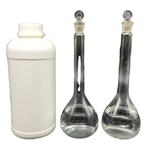
- $10.00 / 1kg
- 2023-07-31
- CAS:123-91-1
- Min. Order: 10kg
- Purity: 99%
- Supply Ability: 20tons




